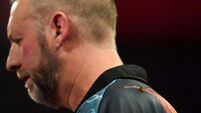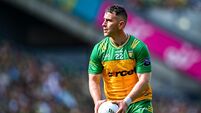'Hawk-eye' a distant propect for tennis
Australian Open tournament director Paul McNamee today dismissed as “very unlikely” suggestions that tennis may look into adopting cricket-style video umpires to rid the game of questionable line-calls.
Yesterday’s women’s final was marred by a disputed umpire’s over-rule in the final set which gave Justine Henin-Hardenne the crucial break of serve and effectively ended Kim Clijsters’ victory chances.
Television replays, using the ‘Hawk-Eye’ technology, showed the ball had actually clipped the line and raised the immediate question of whether tennis should follow cricket’s lead.
Clijsters said it would be tough to implement but was receptive to the idea; McNamee, however, insisted television would not dictate to tennis how it should evolve.
“We wouldn’t be putting our hand up first,” he said.
“There’s no way. We tried it with electronic lines. The sport wasn’t in favour of it at all. I think it will be a long, long bow to think that it will come back in terms of officiating points.
“The sport hasn’t wanted it, and it is unlikely the sport is going to want it. That’s the message we’re getting. It’s very unlikely. I doubt it will happen.”
Geoff Pollard, president of Tennis Australia, is chairman of the ITF’s technology committee and said the governing body will be looking into line-calling machines – but reports they need further proof of their accuracy.
“I’ve been advised that the ‘Hawk-Eye’ people have not provided a machine for them to test to ascertain and get an ITF certificate of accuracy,” he said.
“Until the ITF has the opportunity to do that analysis, I think we’ll see lines-people out there. That’s the current status that I have been advised.”
Pollard echoed Clijsters’ thoughts of how the technology would be introduced and when it would be called for.
“It’s great for the end of the rally, but a lot of close calls are not the last shot of the rally,” he said.
Pollard added that sport the world over embraces the human element of officiating – even if people want the best technology for training and improvement purposes.
“I had a discussion with the Americans on this issue. They wanted to use it for baseball, to distinguish the difference between a strike and a ball,” he said.
“They have decided not to do it. They would prefer to have people doing it.
“Interestingly, they are using it to test how good the umpires are – so you’ve got the best at the World Series.
“It’s done to test the quality of the umpires but not used to actually call strikes and balls.”














